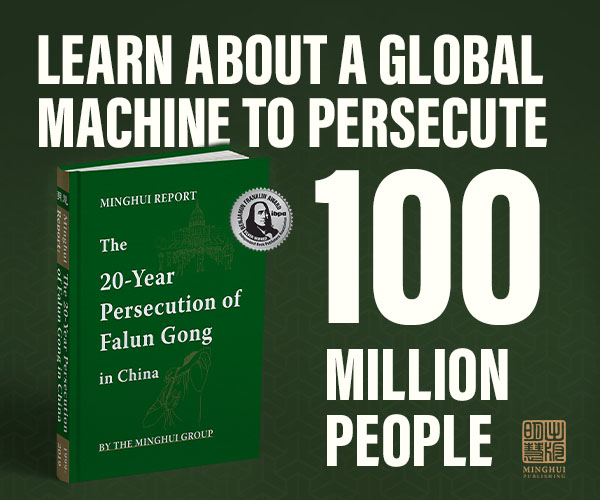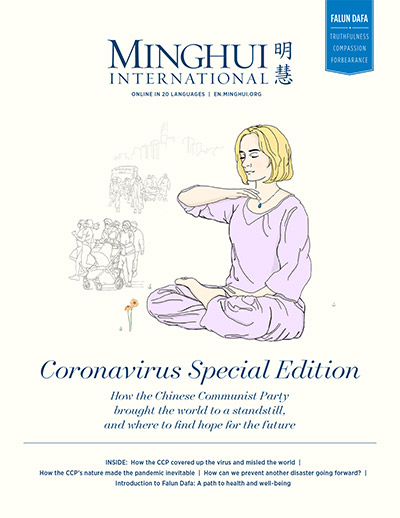(Minghui.org) Since the Chinese Communist Party (CCP) ended the zero-COVID policy, the number of infections has soared across the country. Zhejiang Province Health Commission recently announced that over one million people in the province had been infected and that new cases were increasing at a rate of 10% per day. Qingdao City in Shandong Province also recently reported 500,000 new cases in the city of a population of 10 million.
On December 26, China’s National Health Commission (NHC) downgraded COVID-19 to a Class B infectious disease (which no longer requires quarantine) and announced the end of the quarantine requirements for inbound travelers beginning January 8, 2023. Although inbound travelers still need a negative virus test result obtained within 48 hours before departure, they no longer need a health pass or to quarantine. These changes will likely allow more Chinese citizens to travel abroad as they no longer have to worry about quarantines when they return to China.
Reactions from the International Community
Due to the surge of COVID cases in China, South Korea’s Disease Control and Prevention Agency (KDCA) recently added China to its list of “target inspection” countries. “The intensive inspection is aimed at strengthening quarantine at Incheon International Airport for travelers coming in from countries that have a high risk of infection or are in need of tighter management,” reported The Korean Broadcasting System (KBS) on December 22.
Japanese Prime Minister Fumio Kishida announced on December 28 that, starting on December 30, Japan will require COVID tests of all visitors from China as a temporary emergency measure against the surging infections there. “The quantitative antigen test that is already conducted on entrants suspected of having COVID-19 will be mandatory for all people arriving from mainland China,” reported NRP on December 27. “Those who test positive will be quarantined for seven days at designated facilities and their samples will be used for genome analysis.”
Kishida said China lacks information transparency about the infections. There are huge discrepancies between information from the central government and the local governments, and between the governments and private organizations. “There are growing worries in Japan,” he explained. “We have decided to take a temporary special measure to respond to the situation.”
In addition, India mandated that travelers from China, Japan, Hong Kong, South Korea, and Thailand be tested for COVID-19. Besides quarantining those with symptoms or testing positive, India also began randomly testing two percent of international passengers arriving at its airports.
Italian Health Minister Orazio Schillaci made coronavirus tests mandatory for visitors from China starting on December 27 following an explosion in cases in China. He said such a measure was “essential to ensure the surveillance and identification of any variants of the virus in order to protect the Italian population,” according to a report on VOA on December 27.
The University of Washington’s Institute for Health Metrics and Evaluation (IHME) predicted the death toll in China could reach one million by the end of 2023. Given that other viruses such as RSV and flu have hit other countries hard recently, the situation could be even worse, remarked IHME professor Ali Mokdad, a former senior epidemiologist with the CDC in the US. He said the CCP authorities failed to come up with a Plan B when they ended the zero-COVID policy. IHME estimated that daily infections could reach 4.6 million by March 1, 2023.
Calling for Transparency
Liu Hua, a human rights advocate in Beijing, told Epoch Times on December 26 that 90% of the city’s residents had been infected. People are sick, but there are no medicines. The elderly were facing a more dire situation. “It is shocking that you could chat with a friend the night before, only to find him dead the next morning,” he said. “And the crematories cannot keep up. Too many dead in such a short period of time!”
Zhang Liang, a physician in Shijiazhuang City, Hebei Province, was interviewed by Radio Free Asia on December 27. She believed that NHC renamed “novel coronavirus pneumonia” as “novel coronavirus infection” and downgraded the disease from Class A to Class B the day before because there were too many infections. She said 80-90% of the people in her province could have been infected.
The World Health Organization is very concerned about the situation in China. “In China, what’s been reported is relatively low numbers of cases in ICUs, but anecdotally, ICUs are filling up,” remarked WHO’s emergencies director Mike Ryan. “I wouldn’t like to say that China is actively not telling us what’s going on.”
According to WHO, when a virus is widely circulating in a population and causing many infections, the likelihood of the virus mutating increases. “The more opportunities a virus has to spread, the more it replicates—and the more opportunities it has to undergo changes,” according to its website. Without detailed information on gene sequences, medical experts are unable to confirm which variants contributed to the current surge in China.
U.S. Secretary of State Antony Blinken urged the Chinese authorities to be more transparent on the COVID situation. White House coronavirus response coordinator Ashish Jha said the US is monitoring for potential new variants possibly carried by travelers. He also urged people to be prepared for increased infections.
All content published on this website are copyrighted by Minghui.org. Minghui will produce compilations of its online content regularly and on special occasions.
Category: News & Events










